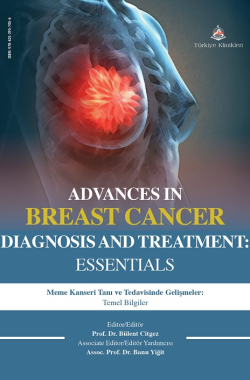EPIDEMIOLOGY OF BREAST CANCER
Alişan Berk Deniz
Osmaniye State Hospital, Department of General Surgery, Osmaniye, Türkiye
Deniz AB. Epidemiology of Breast Cancer. In: Citgez B editor. Advances in Breast Cancer Diagnosis and Treatment Essentials. 1st ed. Ankara: Türkiye Klinikleri; 2025. p.13-16.
ABSTRACT
Breast cancer remains the most commonly diagnosed malignancy and a leading cause of cancer-related mortality among women worldwide. Rising incidence is primarily attributed to demographic aging, urbanization, and shifts in lifestyle behaviors. While high income countries have achieved reductions in mortality through early detection and effective treatment, significant disparities persist in low and middle income regions due to delayed diagnosis and limited healthcare access. Key risk factors include age, hereditary mutations (particularly BRCA1/2), hormonal exposure, and modifiable elements such as obesity and alcohol use. Molecular subtype distribution reveals notable ethnic disparities, with triple-negative breast cancer being disproportionately prevalent among black women. According to SEER data, survival outcomes vary markedly by stage at diagnosis, reinforcing the critical importance of early detection. Emerging diagnostic innovations including digital breast tomosynthesis, polygenic risk scores and artificial intelligence driven tools support personalized screening strategies. These approaches hold potential for identifying high-risk individuals and tailoring surveillance more effectively. Concurrently, primary prevention remains a global priority, with public health initiatives encouraging healthy weight, physical activity, alcohol limitation, and breastfeeding, particularly for reducing hormone receptor-positive breast cancers. Increasing awareness campaigns and structured community outreach programs are essential for promoting participation in screening and prevention. Furthermore, addressing barriers such as health literacy, cultural perceptions, and healthcare inequities is critical to ensure equitable access to advances in breast cancer care. This chapter offers a comprehensive overview of the global epidemiology of breast cancer and advocates a multidimensional approach integrating risk reduction, diagnostic innovation, and health equity. By highlighting the interplay of biological, social, and technological factors, it underscores the importance of combining evidence-based medical interventions with broader public health strategies. Ultimately, sustainable progress in breast cancer control will require collaborative efforts across healthcare systems, governments, and communities to reduce disparities, enhance early detection, and improve survival and quality of life for patients worldwide.
Keywords: Breast neoplasms; Epidemiology; Risk factors; Diagnosis; Diagnostic screening programs; Preventive health services; Diagnostic techniques and procedures
Kaynak Göster
Referanslar
- World Health Organization. Breast cancer. Geneva: WHO; 2024. Available from: sheets/detail/breast-cancer [Link]
- Giaquinto AN, Sung H, Newman LA, et al. Breast cancer statistics 2024. CA Cancer J Clin. 2024;74(6):477-495. [Crossref] [PubMed]
- American Cancer Society. Breast Cancer Facts & Figures 2024-2025. Atlanta: American Cancer Society; 2024.
- National Cancer Institute. SEER Cancer Stat Facts: Female Breast Cancer. 2024. Available from: statfacts/html/breast.html [Link]
- Oluwasanu M, Olopade OI. Global disparities in breast cancer outcomes: new perspectives, widening inequities, unanswered questions. Lancet Glob Health. 2020;8(8):e978-e979. [Crossref] [PubMed]
- WCRF/AICR. Diet, Nutrition, Physical Activity and Breast Cancer. Continuous Update Project Expert Report 2020. London: World Cancer Research Fund International; 2020. Available from: breast-cancer/ [Link]

